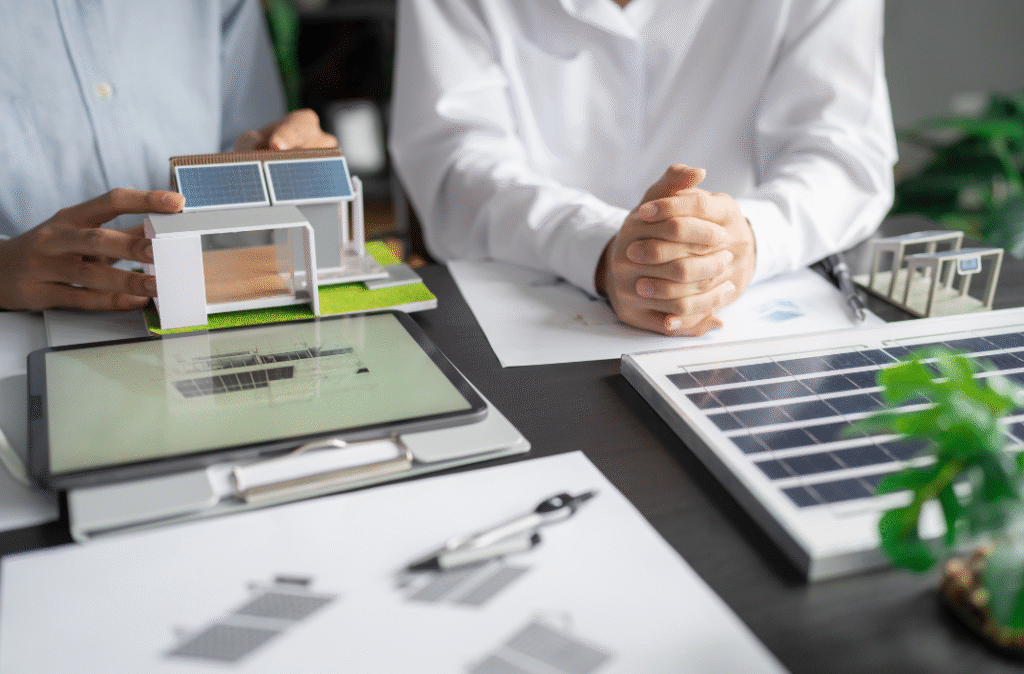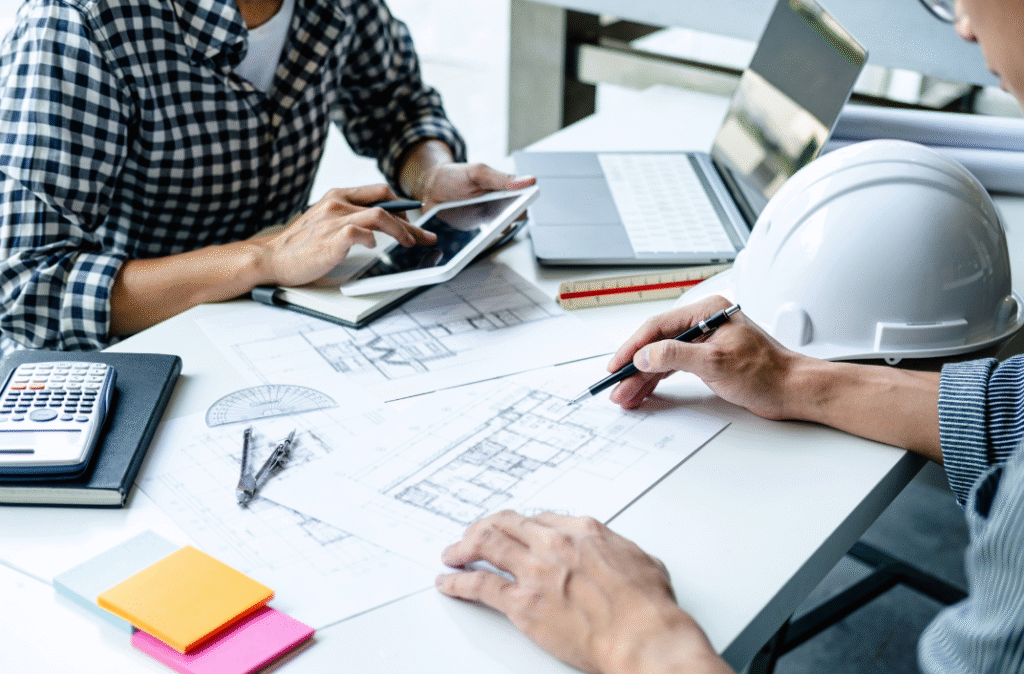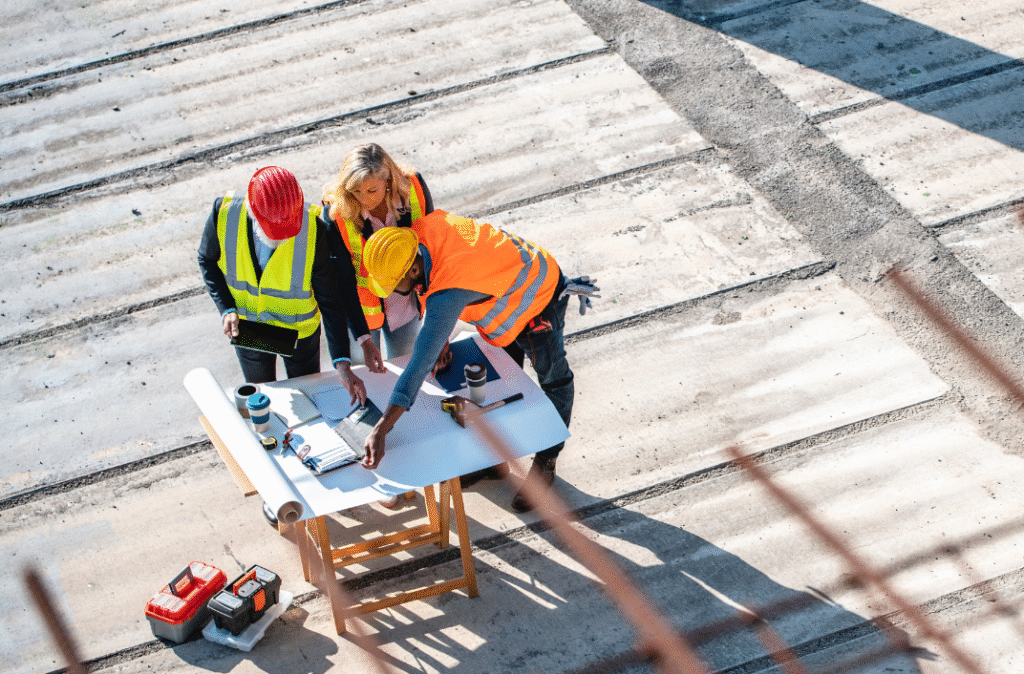Sustainable trends in construction: how to build today with tomorrow in mind

In a world increasingly aware of its environmental impact, the construction industry is evolving toward more responsible and efficient practices. Sustainability is no longer an option, but a necessity. In this article, we explore the main sustainable trends in construction that are shaping the present and defining the future of the sector. 1. Eco-friendly and recycled materials. The use of sustainable materials is one of the keys to reducing environmental impact. Today, priority is given to products such as: These materials not only reduce the carbon footprint but also provide energy efficiency and durability. 2. Energy efficiency in design. A growing trend is architectural design geared toward minimizing energy consumption. How is this achieved? These decisions reduce the use of artificial energy and allow buildings to remain comfortable with lower consumption. 3. Modular and prefabricated construction. Modular construction allows components to be manufactured in a controlled environment and then assembled on-site. What benefits does it offer? 4. Efficient water management. Sustainability also involves caring for a vital resource: water. Some common practices include: These systems help conserve water and reduce operating costs in the long term. 5. Green certifications and international standards More and more projects are seeking certifications such as: These certifications guarantee that a building meets rigorous, internationally recognized sustainability criteria. 6. Technology for smarter construction Digitalization also drives sustainability. Tools such as BIM (Building Information Modeling) allow for planning and simulating each stage of the project, optimizing resources and avoiding costly errors. Additionally, home automation makes it possible to efficiently manage the use of energy, lighting, ventilation, and security in finished buildings. Building today with an eye to the future Applying these trends not only benefits the planet, but also owners, users, and communities. Sustainable construction: At CONSTRUGOVA SRL, we believe in a better future. As a company committed to excellence and innovation, at CONSTRUGOVA SRL we adopt sustainable practices at every stage of your project, from design to execution. If you want to build responsibly and with a vision for the future, contact us today. 📩 info@construgova.com 📞 829-660-9009
What is structural design and why is it essential in any project?

In the construction world, each element plays a key role in ensuring that a structure is safe, functional, and durable. One of the most important components—and sometimes little understood by non-engineers—is structural design. In this article, we explain what it consists of, what it's used for, and why it's essential in any type of construction project. What is structural design? Structural design is the civil engineering discipline responsible for planning, calculating, and defining the structural elements of a building or civil engineering project. It focuses on how columns, beams, slabs, foundations, roofs, and other components should be constructed so that the structure can withstand loads, forces, and environmental conditions without collapsing or deforming. In short, it is the technical foundation that ensures that a building or infrastructure not only remains standing, but does so safely, stably, and functionally throughout its entire useful life. Why is it so important? Structural design is not a mere formality; it is a critical part of the success and safety of any construction project. Here are some key reasons: 1. Structural Safety: Proper design protects lives. Poorly designed structures can fail under excessive loads, earthquakes, wind, or ground settlements. A well-executed structural design ensures that the structure withstands these factors without the risk of collapse. 2. Material Optimization: Thanks to precise structural design calculations, both excess and shortage of materials are avoided. This reduces unnecessary costs without compromising the strength and durability of the structure. 3. Regulatory Compliance: Every country has building regulations and codes that must be followed. Structural design ensures that your project is within the legal framework, facilitating the obtaining of permits and avoiding penalties. 4. Long-Term Durability: A well-considered structural design prevents future problems such as cracks, uneven settlement, leaks, or deformation. It is an investment in the quality and lifespan of the project. 5. Adaptation to Specific Conditions: Every project is unique: the type of soil, the climate, the intended use of the building, and other factors influence how the structure should be designed. A customized design ensures that the building responds appropriately to its environment. Who performs it? Structural design must be performed by a structural engineer or a team of trained professionals. At CONSTRUGOVA SRL, we have highly specialized engineers with extensive experience in the structural design of residential, commercial, and industrial projects, always aligned with current best practices and regulations. Conclusion Whether it's a home, an industrial warehouse, or a shopping mall, structural design is the technical heart of any project. It ensures that the construction is safe, efficient, and sustainable over time. At CONSTRUGOVA SRL, we are ready to help you design solid, safe, and optimized structures. Write to us at info@construgova.com or call us at 829-660-9009 and start your project on a solid foundation.
5 keys to ensuring success in your construction project from day one

Starting a construction project can be exciting, but it also entails great responsibility. From planning to execution, every decision counts. At CONSTRUGOVA SRL, we have helped dozens of clients bring their ideas to life, and we know that the success of a project is not a matter of luck, but rather of strategy, organization, and commitment. Below, we share 5 essential keys to ensuring that your construction project progresses smoothly and becomes a true success from day one: 1. Define your objectives clearly. Before laying the first block, you must have a clear vision of the result you want to achieve. Is it a residential, commercial, or industrial project? What is your maximum budget? What timeframe do you have? Setting realistic objectives will help you make consistent decisions throughout the process and avoid unnecessary deviations. 2. Choose a professional and reliable technical team. Having an engineering and construction company with proven experience is essential. At CONSTRUGOVA SRL, we combine technical knowledge, innovation, and commitment to offer comprehensive and customized solutions. A professional team doesn't just build: they advise you, prevent errors, and ensure the safety and quality of every detail. 3. Conduct a technical study of the site. Many construction problems arise from a lack of knowledge of the soil conditions. A topographic survey and an adequate analysis of the terrain will allow you to design a safe structure adapted to the environment, avoiding cost overruns and future risks. 4. Establish a realistic and flexible schedule. A detailed work plan is key to meeting deadlines. However, it's also important to leave room for adjustments. Factors such as weather, permits, and material availability can affect the schedule. A well-designed schedule will give you control and insight into each stage. 5. Prioritize constant communication. Maintaining fluid communication with your construction team facilitates decision-making and allows you to anticipate any eventuality. Regular meetings, progress reports, and technical reviews are valuable tools to keep the project on track and ensure its final quality. Conclusion: The construction of a project is an investment that requires planning, experience, and professional support. At CONSTRUGOVA SRL, we're committed to making your ideas a reality, ensuring efficiency, safety, and lasting results. Ready to get started? Contact us today at 829-660-9009 or email us at info@construgova.com, and we'll discuss your next project.

